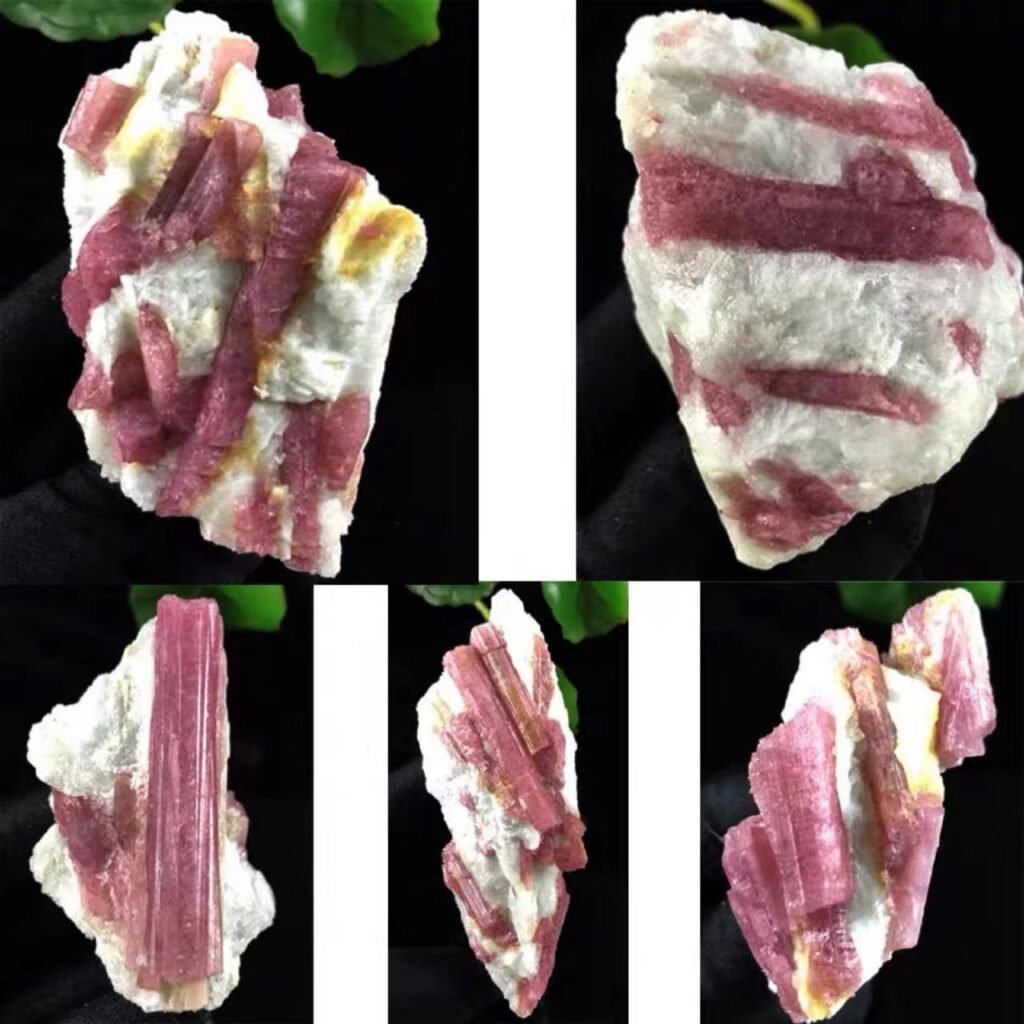
Gems are the precious gifts of nature to human beings. There are thousands of kinds of precious stones on the market. Some are as hard as a diamond. Some are hard and beautiful in colors, such as ruby and sapphire. Depending on where the stones were produced and the geological conditions in which they were formed, they have different structures, chemical compositions, colors, and luster. Depending on the scarcity of various gems, the price varies greatly. Here I will introduce the simple identification and quality comparison of natural crystal and natural tourmaline and share some of my accumulation. I hope you like it.
1. Test the chemical composition of tourmaline and crystal
Tourmaline is a complex silicate crystal, a colorless transparent extensive quartz crystal mineral. The main chemical composition of crystal is silica; when silica crystal perfect is crystal; After silica gel dehydration is agate; Silica hydrophilic colloid solidifies and becomes opal; Silica grains more minor than a few micrometers, the composition of chalcedony, flint, secondary quartzite. Because of the complex chemical composition of tourmaline, synthetic tourmaline does not have its physical properties. Artificial crystal ornaments are available in many markets. In 1768, the famous Swedish scientist Linness discovered that tourmaline has piezoelectric and thermoelectric properties when heated. Hence, the mineralogical name is “tourmaline.” Crystals have no such effect. The color of tourmaline is also much richer than that of crystal, with as many as 15 complex colors subdivided. The hardness of tourmaline is also higher than that of crystal, and the magnetic field of tourmaline is tens to hundreds of times that of crystal of the same color.
2. Check the tourmaline and crystal for color and luster
From the perspective of color comparison: there are many kinds of natural crystal colors; the most common are white, yellow, purple, tea crystal, powder (hibiscus), and ink crystal. Containing associated inclusion minerals of crystal (gold, silver, copper), green ghost, and red rabbit hair. The tourmaline has many colors known as the “rainbow scattered in the world.” There are almost all kinds of colors, such as red tourmaline, green tourmaline, pink tourmaline, blue tourmaline, and orange tourmaline. And multi-colored tourmaline. There is even tourmaline with two or more colors on one tourmaline; for example, watermelon tourmaline is commonly seen. The tourmaline has a natural color transition, while the fake tourmaline appears unnatural and has a significant jump. Inexperienced consumers are generally hard to tell apart.
From the luster to make a comparison: crystal is glass luster, colorless crystal without multicolor, colored crystal has weak to bright solid. Tourmaline is also glassy, but tourmaline, in addition to colorful colors, the most attractive is it’s multicolor. Suppose you look at the tourmaline carefully and you turn the tourmaline in your hand against the light. In that case, it will change color from light to dark, which is very beautiful. In addition, because its interior contains rich vapor-liquid inclusions, an almost directional distribution, and seems to be a tube, under light irradiation, there is an apparent bright band, which is often said to be the “cat’s eye effect.”
3. Test tourmaline and crystal for hardness and density
The Mohs hardness of crystal is 6.5-7; the density is 2.66g/cm3, belongs to a kind of quartz crystal; The hardness of tourmaline is 7-8, the thickness is 3.06g/cm3, belongs to the borosilicate crystal class.
4. Check prices for crystals and tourmalines
There is no easy way to tell the difference between tourmaline and crystal quickly. However, the value of the two is very different, and tourmaline is much more valuable than crystal. If you see the name of high-end tourmaline, but the price is meager, there is no doubt that it is a fake, do not buy.
5. Check the inspection certificate of tourmaline and crystal
The tourmaline inspection certificate will show “Tourmaline”; The crystal inspection certificate is “Crystal”. For the consumer, the safest way is to get a professional appraisal.
6. Master the number of color types of tourmaline and crystal
The color of tourmaline crystal is as many as 15 complex colors: colorless, rose red, pink, red, blue, green, yellow, brown, and black. The transparent blue, bright rose red, and pink and green complexed colors are the best among these colors. People have loved tourmaline since ancient times because of its bright color, variable, and high transparency. Tourmaline is one of the most famous colored gemstones after diamonds, rubies, sapphires, and emeralds. The color of the crystal is not so variable as that of tourmaline, and the color of artificial tourmaline is not as natural as that of natural tourmaline. And tourmaline often has obvious dichroism and visible double shadow; this is a straightforward identification method! Tourmaline looks the same as other gemstones and is evaluated and selected based on color, luster, transparency, inclusions, defects, and weight. However, due to the brittleness of tourmaline, attention should be paid to avoiding impact when wearing it.